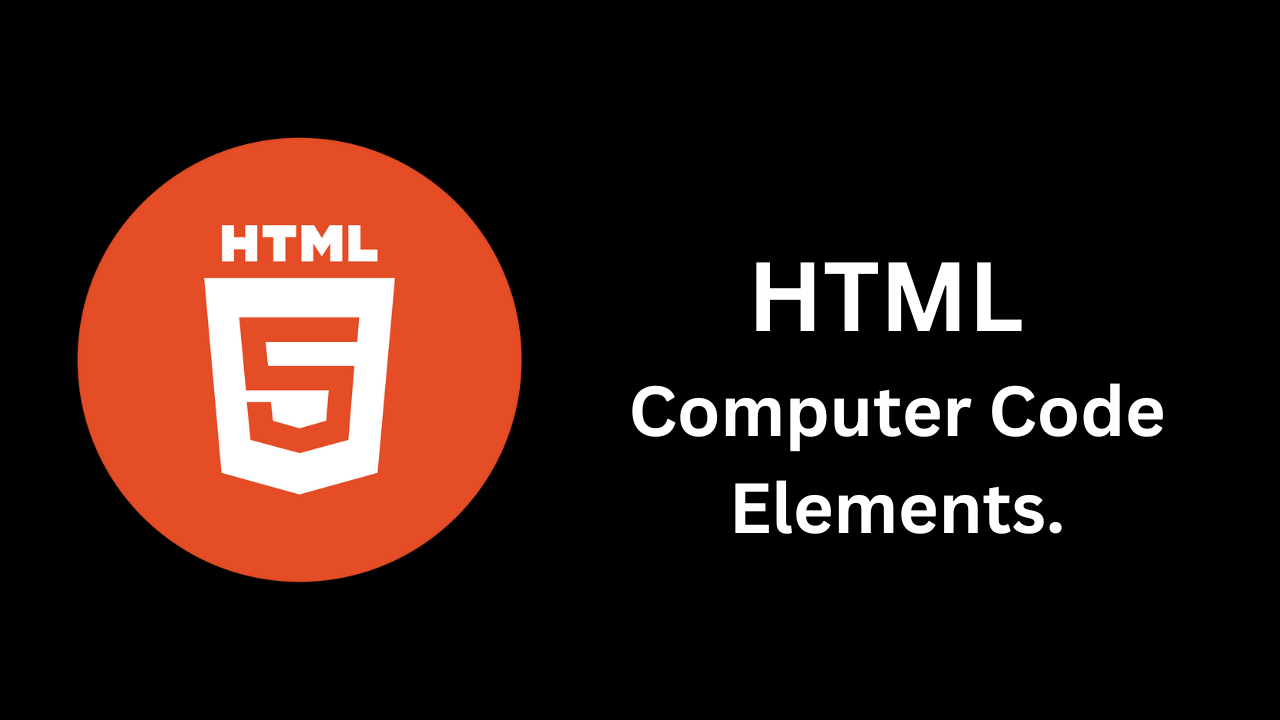Understanding HTML Computer Code Elements
 Shivani Patel
Shivani Patel
In web development, presenting code snippets or programming examples clearly is crucial for enhancing readability and comprehension. HTML provides specific elements designed to format and display code effectively. In this blog post, we’ll explore the various HTML elements for computer code, their usage, and best practices for incorporating them into your web pages.
What Are HTML Computer Code Elements?
HTML computer code elements are specialized tags that allow developers to present code snippets, programming languages, or technical information in a structured and visually distinct manner. These elements help differentiate code from regular text, making it easier for readers to understand and follow.
Key HTML Code Elements
1. <code>
The <code> element is used to represent a fragment of computer code. It displays text in a monospaced font, which is commonly used for code, making it stand out from regular text.
Example:
<p>To display an alert in JavaScript, use the following code: <code>alert('Hello, World!');</code></p>
2. <pre>
The <pre> element stands for "preformatted text." It preserves whitespace and line breaks, displaying text exactly as written in the HTML source. This is particularly useful for code that requires specific formatting, such as indentation.
Example:
<pre>
function greet() {
console.log('Hello, World!');
}
</pre>
3. <kbd>
The <kbd> element is used to represent user input, typically from a keyboard. It’s also displayed in a monospaced font, making it suitable for commands or keystrokes.
Example:
<p>To save your changes, press <kbd>Ctrl</kbd> + <kbd>S</kbd>.</p>
4. <samp>
The <samp> element is used to display sample output from a program or command. It typically appears in a monospaced font, similar to the <code> element.
Example:
<p>After executing the command, you might see the following output: <samp>Success: File saved.</samp></p>
5. <var>
The <var> element is used to represent a variable in a mathematical expression or programming context. It is typically rendered in italics by default.
Example:
<p>The area of a circle can be calculated using the formula <code>area = π × <var>r</var>²</code>.</p>
Combining HTML Code Elements
For better clarity and structure, these elements can be combined. For example, you might use <pre> to preserve formatting and include <code> within it for syntax highlighting.
Example:
htmlCopy code<pre>
<code>
function add(a, b) {
return a + b;
}
</code>
</pre>
Best Practices for Using HTML Code Elements
Use Semantic Elements: Choose the appropriate HTML code elements based on context. For instance, use
<code>for code snippets,<kbd>for keyboard inputs, and<samp>for program outputs.Preserve Formatting: Utilize
<pre>when you need to preserve whitespace and formatting, especially for blocks of code that rely on indentation.Accessibility: Ensure that your code snippets are accessible. Use appropriate markup to convey meaning and assist screen readers.
Syntax Highlighting: Consider using libraries like Prism.js or Highlight.js for syntax highlighting. This improves readability and helps users identify different parts of the code easily.
Limit Length: Keep code snippets concise. Long blocks of code can overwhelm readers. Provide links to full documentation or code repositories if needed.
Commenting: Include comments within your code snippets to explain complex logic or highlight important features, aiding understanding.
Example of a Code Snippet with HTML Elements
Here’s an example of a complete HTML block using various code elements effectively:
<!DOCTYPE html>
<html lang="en">
<head>
<meta charset="UTF-8">
<meta name="viewport" content="width=device-width, initial-scale=1.0">
<title>HTML Code Elements Example</title>
<link rel="stylesheet" href="styles.css"> <!-- Optional CSS for styling -->
</head>
<body>
<h1>Understanding HTML Code Elements</h1>
<p>Here is a simple JavaScript function:</p>
<pre>
<code>
function multiply(a, b) {
return a * b; // Multiplies two numbers
}
</code>
</pre>
<p>To call this function, you can use:</p>
<p><code>multiply(2, 3)</code> which will return <samp>6</samp>.</p>
<p>Press <kbd>Enter</kbd> to execute the command.</p>
</body>
</html>
Conclusion
HTML code elements play a crucial role in presenting programming content effectively. By utilizing elements like <code>, <pre>, <kbd>, <samp>, and <var>, you can create clear and structured code snippets that enhance readability and user understanding.
Incorporating best practices for accessibility and formatting will ensure that your content is not only informative but also user-friendly. Mastering these elements will significantly improve your technical documentation, tutorials, and web applications. Happy coding!
Subscribe to my newsletter
Read articles from Shivani Patel directly inside your inbox. Subscribe to the newsletter, and don't miss out.
Written by
